Last updated: August 2025
In today’s competitive rental and lending markets, it might be tempting to use a fake pay stub or doctor a bank statement. Landlords, auto‑finance companies and lenders often ask for proof of income before approving an application. But falsifying documents is risky, unethical and often illegal. Penalties can include steep fines, imprisonment and long‑term damage to your creditworthiness. In the US, submitting false statements to influence a loan application can result in fines of up to one million dollars or imprisonment for up to 30 years (18 U.S.C. § 1014). The UK’s Fraud Act imposes sentences of up to 10 years (Fraud Act 2006), and Canada’s Criminal Code allows for 10‑year prison terms for forgery (Criminal Code, s. 368). Our aim is to help you avoid these pitfalls and present your real information clearly and professionally.
This guide explains fake pay stubs risks in plain language and shows safer, legal ways to verify income. We focus on formatting your real records so reviewers see the truth clearly—and you stay well inside the law.
FinancialDocsProvider.com works with renters, vehicle buyers, entrepreneurs and students in the United States, United Kingdom and Canada. We clean up your paperwork so underwriters see exactly what they need to make a decision. We do not fabricate numbers, change dates or create phantom employers—ever. Instead, we focus on formatting, legibility and privacy. If your employer or bank made an error, we’ll show you how to get an official correction; if your statement is messy, we’ll tidy it up. By the end of this guide you’ll know why fake documents are dangerous and what safer alternatives can improve your chances of approval.
Related Entities & Terms
- Forms: W‑2, 1099‑NEC/1099‑K (US); P60/P45 and payslips (UK); T4, T4A and Notice of Assessment/NOA (Canada)
- Regulators: IRS, FTC and CFPB (United States); FCA and GOV.UK (United Kingdom); CRA and FCAC (Canada)
- Other documents: employment verification letters, income summaries, bank transaction histories, tax transcripts
- Concepts: open banking, KYC/AML checks, fraud screening, underwriting, affordability assessments
- Processes: PDF exports, OCR cleanup, metadata hygiene, redaction and annotation
- Terms: gross vs. net pay, year‑to‑date totals (YTD), deposit reconciliation, income verification packets
- Jurisdictional forms: SA302 (UK self‑assessment), T1 General (Canada tax return), Form 1040 (US tax return)
- Services: proof‑of‑income editing, bank statement formatting and compliant document packaging
Throughout this article we will link to other guides on FinancialDocsProvider.com, such as our in‑depth look at the risks of using fake pay stubs, our primer on common legal mistakes in bank statement editing, and our comparison of pay stubs versus bank statements. These resources provide additional context and examples.
What are the legal basics of pay stub and bank statement editing?
Understanding fake pay stubs risks starts with the law. Lawful editing improves legibility and protects privacy; it never alters facts. Falsification—changing the numbers, dates or parties—crosses a bright legal line and can be charged as fraud.
The United States penalizes anyone who knowingly makes a false statement to influence a financial institution with fines of up to $1,000,000 or imprisonment for up to 30 years (18 U.S.C. § 1014). The UK’s Fraud Act 2006 treats fraud by false representation as an indictable offence punishable by up to 10 years. Canada’s Criminal Code, s. 368 makes forging or using a forged document a hybrid offence; those convicted on indictment can face up to 10 years in prison. This article is general information, not legal advice; consult qualified counsel for specific questions.
Legality depends on intent and materiality. If you clean up a blurry scan, remove your bank account number or translate your payslip into another language while keeping all numbers, dates and payees intact, you are within safe territory. If you alter gross pay, backdate deposit dates, fabricate an employer or delete overdraft fees, you cross into falsification. Landlords and lenders increasingly use automated verification systems that compare your pay stub to payroll databases and cross‑check bank transactions. When discrepancies arise, your application may be rejected, and you could be flagged in fraud databases.
Below is a compliance snapshot contrasting permitted and prohibited edits. Use it as a quick reference before requesting any changes.
| Allowed edits (facts unchanged) | Illegal alterations (do not request) |
|---|---|
| Mask SSN/NIN/SIN to last four digits, redact account numbers, blur barcodes | Change wages, hours, YTD totals or tax withholdings |
| Fix truncated columns, overlapping text, font issues or page rotation | Invent an employer, modify employer details or swap logos |
| Normalize date formats, add cover pages and indexes, combine PDFs | Backdate or forward‑date pay periods, alter pay frequency |
| Remove corrupt metadata, flatten PDFs, run OCR for searchability | Create “sample” stubs or templates to pass off as real records |
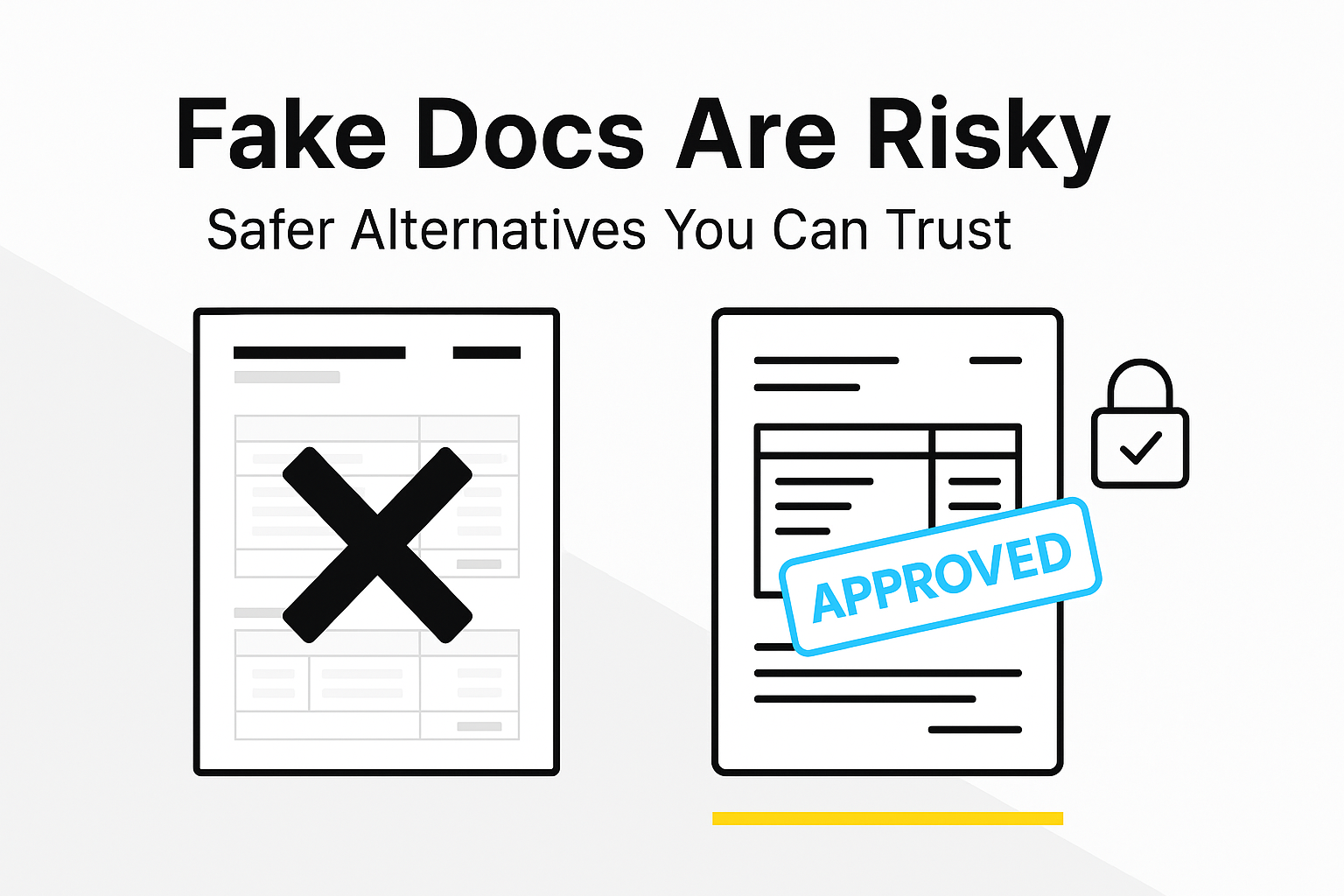
Key takeaway: editing is lawful when it improves legibility or privacy without altering facts. Falsification—any change that misrepresents your income, identity or account history—is illegal and can lead to severe penalties in the US, UK and Canada.
Which edits are allowed when improving pay stubs and bank statements?
Many applicants worry that any modification counts as fraud, but that’s not the case. Certain edits are both lawful and advisable because they protect your privacy and help reviewers read your file quickly. The law focuses on the truth of the information, not the formatting. Below are permitted edits with practical examples and short scenarios.
How can you redact sensitive data?
Redaction involves masking personally identifiable information while leaving the underlying facts intact. This includes:
- Masking your Social Security Number (US), National Insurance Number (UK) or Social Insurance Number (Canada) so only the last four digits remain.
- Blurring bank account numbers and QR/barcodes that could expose tokens or authentication codes.
- Removing physical addresses or phone numbers when they aren’t relevant to the reviewer.
Redaction does not include erasing overdraft fees, reversing NSF charges or hiding large cash withdrawals—those actions change the perception of your financial position and may constitute fraud.
Scenario: You’re applying for an apartment and want to keep your full account number private. Mask the number except the last four digits and leave every transaction unchanged. The landlord can still reconcile your deposits against your pay stubs.
What readability fixes are allowed?
Sometimes statements exported from payroll systems or online banking portals contain garbled text, misaligned columns or inconsistent date formats. Correcting these technical flaws is lawful because it doesn’t change the underlying numbers. You may:
- Adjust layout and fonts so rows and columns align and content doesn’t overlap.
- Normalize date formats (e.g., converting 10/08/2025 to 2025‑10‑08) for consistency, as long as you don’t alter the actual dates.
- Combine multiple pages into a single PDF packet with a clear cover page, table of contents and page numbers.
These changes make your documents easier to read and evaluate; they do not inflate your income or hide obligations.
Scenario: Your payroll system prints long employer names that overlap totals. Fixing the column widths and font size is safe. It preserves every amount while preventing misreads.
When are export and technical fixes necessary?
Technical issues such as corrupt metadata or unsearchable scans can delay your application. You can safely:
- Flatten PDFs to embed fonts and avoid substitution errors during upload.
- Remove or repair corrupt metadata that may cause file‑upload failures.
- Run Optical Character Recognition (OCR) on scanned documents to make them text‑searchable and accessible.
These actions improve the technical quality of your files without changing their content.
Scenario: A lender’s portal rejects your bank statement due to embedded fonts. Flattening the PDF and re‑exporting resolves the error without touching a single transaction.
What annotations and labels help reviewers?
Annotations can guide reviewers and reduce confusion. Examples include:
- Adding a note pointing to the year‑to‑date total or overtime earnings on your pay stub.
- Inserting an index page listing the documents and date ranges included in your packet.
- Flagging periods when you earned bonuses or commissions so underwriters don’t assume those amounts recur every pay period.
These labels provide context; they do not modify the underlying data.
Scenario: Your income includes quarterly bonuses. A brief annotation clarifies that a higher‑than‑usual deposit reflects a one‑time bonus, helping prevent over‑ or under‑estimation of affordability.
If your documents need these lawful improvements, our proof‑of‑income editing and bank statement formatting services can help. Check our pricing page for details.
What edits are illegal and why do they backfire?
Illegal edits alter the substance of your records and create the very fake pay stubs risks most applicants want to avoid. Changing numbers, dates or parties misrepresents reality and is considered falsification. Landlords, lenders and law enforcement treat this as fraud, which carries heavy penalties.
Below are common illegal alterations, how they are detected and the consequences you may face.
Which changes cross the line?
- Changing pay amounts or hours. Inflating your gross pay, reducing deductions, inventing bonuses or adjusting tax withholdings distort your income. These changes will not align with payroll records or year‑to‑date totals.
- Altering dates or pay periods. Backdating or forward‑dating a pay stub to meet minimum history requirements is illegal. Underwriters cross‑check deposit dates with bank statements and detect inconsistencies.
- Inventing employers or editing employer details. Creating a fake company or using logos from templates is a clear sign of fraud. Verifiers call listed employers, check payroll service databases and quickly discover fabrications.
- Using “sample” or “template” stubs as real proof. Downloading a generic pay stub template and filling it in with your information may look professional, but it lacks authentication. It will not match your bank deposits or tax documents, and the template itself may be flagged.
- Removing entire transactions. Erasing overdraft fees, bounced checks or cash withdrawals from a bank statement changes the factual record. Even if you think the items are embarrassing, deleting them misleads the reviewer.
Mini‑scenario: A borrower edits a $1,860 deposit to $2,460 to meet an income threshold. The pay stub no longer reconciles with payroll records or the bank statement. The lender denies the application and reports the discrepancy to fraud databases.
How do lenders detect fake documents?
Underwriters use multiple tools to detect fake pay stubs and bank statements. These checks run quickly and at scale:
- Payroll verification. Reviewers contact employers or use third‑party services to confirm pay amounts, employment dates and pay frequency.
- Bank transaction matching. Deposits are matched to pay dates, amounts and employer descriptors. Discrepancies such as inconsistent employer names or missing deposits trigger red flags.
- Metadata and template fingerprints. Stock templates, duplicate fonts and inconsistent formatting are easy to spot.
- Math checks and cross‑document consistency. Underwriters ensure that year‑to‑date totals reconcile with period totals and that taxes align with your pay rate and jurisdiction.
Field tip: If your numbers are true, these checks help you. If anything has been altered, they will expose it.
What happens if you submit fakes?
The consequences are severe. Immediate outcomes include denied applications, forfeited deposits and account closures. Longer‑term consequences include being blacklisted by landlords or lenders and facing increased scrutiny on future applications. Legal exposure varies by jurisdiction but can involve fines and imprisonment:
- United States: making false statements to influence a bank or lending institution is punishable by fines up to $1,000,000 or imprisonment up to 30 years (18 U.S.C. § 1014).
- United Kingdom: fraud by false representation under the Fraud Act 2006 carries a maximum sentence of 10 years imprisonment.
- Canada: forging or using forged documents is an indictable offence with penalties of up to 10 years imprisonment (Criminal Code, s. 368).
In addition to criminal penalties, you may be barred from renting, obtaining credit or working with certain lenders. That’s why we strongly recommend sticking to truthful documents and using professional formatting to present them clearly.
When do you need professional document formatting instead of faking documents?
Understanding when to use professional formatting—rather than creating fake documents—helps you make informed, compliant choices. Different situations call for different documentation, and each has its own expectations. Below are common scenarios where professional formatting helps you succeed without breaking the law.
Renters: how to package proof of income
Landlords usually request two to three recent pay stubs, matching bank statements and sometimes an employer letter. If your pay varies due to overtime or seasonal work, include a brief note explaining the fluctuation. Make sure deposits in your bank statements line up with the pay dates on your stubs. A typical packet for W‑2 employees, payslip holders or T4 earners includes:
- Last two to three pay stubs showing gross, net and year‑to‑date pay.
- Corresponding pages from your bank statement showing direct deposit amounts and dates.
- An employer letter confirming your job title, status (full‑time or part‑time) and pay frequency.
- Optional: a brief cover note explaining any variances or unique pay structures (e.g., tips, commissions).
Mini‑scenario: You receive weekly tips that vary. Add a one‑paragraph note and highlight the lines in your bank statement showing tip deposits. The landlord sees the pattern and can verify the totals.
If you are self‑employed or gig‑based, you won’t have traditional pay stubs. Instead, assemble a packet with invoices, a one‑page income summary, recent tax returns and 3–6 months of bank statements showing deposits. Provide a short cover letter outlining your business model and seasonality. Our article on self‑employed renter proof of income goes deeper into building these packets.
Auto loans: present affordability clearly
Dealers evaluate affordability by comparing your monthly income against monthly obligations. Provide a one‑page summary showing your gross versus net income, recurring obligations (rent, loans, insurance) and any variable income streams. Attach recent pay stubs, bank statements and, if self‑employed, profit and loss statements. Clarity speeds underwriting: when the reviewer can quickly confirm your income and obligations, they’re more likely to approve.
Mini‑scenario: Your overtime fluctuates. Include three months of pay stubs and a note that overtime is “as needed.” The lender models your base pay and treats overtime conservatively, which still keeps your file credible.
Small‑business loans and SBA‑type lending
Small‑business owners often don’t have pay stubs. Instead, lenders look at bank statements, tax returns and financial statements. Avoid “creating” a pay stub if you don’t run payroll. Assemble a packet that includes:
- Last three to six months of business bank statements.
- Most recent tax return (e.g., Form 1040 Schedule C, SA302 with tax calculation, or T1 General).
- Supporting documents like invoices, sales summaries or contracts to show revenue streams.
- A concise income summary page outlining average monthly revenue and seasonality.
Mini‑scenario: You run a seasonal landscaping business. Your summary page explains high summer revenue and lower winter income. The bank sees the seasonality matched by deposits in your statements.
Students, new hires and benefit recipients
If you’re a student, recently hired or receiving benefits, you may not have a long income history. Provide:
- A signed offer letter or employment contract stating your salary and start date.
- A recent bank statement or benefits statement showing deposits.
- Scholarship, bursary or grant letters, if applicable.
Mini‑scenario: You start next month and have no pay stubs yet. Submit your signed offer letter and a bank statement. Ask HR for a letter confirming pay frequency to help the landlord model your income.
Cross‑border and variable income applicants
Applicants working in one country and applying for credit in another must translate and convert their documents. Use certified translations and ensure that currency conversions are clearly labelled. Provide both the original and the translated documents so underwriters can verify authenticity. If you receive income from multiple sources, include a summary that explains how these streams fit together.
If you need help assembling any of these packets, our proof‑of‑income editing team can organize and format your documents quickly. See our pricing for details.
How does FinancialDocsProvider.com work?
Our process is designed to be fast, transparent and compliance‑first. We help clients across the US, UK and Canada package their documents so they’re easy to verify. Here’s how our workflow unfolds from intake to delivery.
Intake & consultation
Start by contacting our team via the contact form or chat. We’ll ask you to describe your situation, including what documents you currently have (pay stubs, bank statements, tax forms) and the purpose of your application (renting, auto loan, small‑business loan, etc.). We’ll never ask for your passwords—only for copies of the documents you already possess.
Document reconciliation
Next, our editors check for consistency across your documents. We verify that pay dates align with bank deposits, that year‑to‑date totals match individual periods, and that names and addresses are consistent. If we spot errors, we’ll suggest obtaining corrected documents rather than editing numbers. Our goal is to ensure your packet tells a coherent story.
Formatting & redaction
Once reconciled, we perform technical edits: correcting layout issues, normalizing date formats, running OCR and masking sensitive data. We may add cover pages, page numbers and a document index. Throughout, we never alter factual content. If you need translations or currency conversions, we’ll coordinate with certified professionals.
Delivery & support
When the packet is complete, we deliver it via secure download link. Our typical turnaround time is 24 to 48 hours, depending on complexity. We remain available to answer follow‑up questions from your landlord or lender, and we can make minor adjustments if needed (e.g., splitting files or adding a missing document). Our about page explains more about our mission and compliance ethos.
We do not store your documents long‑term. Once your project is complete, we permanently delete the files from our system, leaving you in full control of your personal information.
What belongs in your compliance checklist?
Before submitting your proof‑of‑income packet, run through this checklist to ensure everything is complete, consistent and compliant. Skipping any step can delay your application or lead to rejection. Treat it as your last‑mile quality control.
Pay stub preparation
- Include the correct number of pay periods (typically the last 2–3 for renters, 3–6 for loans).
- Ensure gross pay, net pay, deductions and year‑to‑date totals are visible and accurate.
- Verify that employer information (name, address, tax ID) matches your offer letter or HR records.
- Cross‑check pay dates with your bank statements; they should align.
- Redact sensitive data (e.g., SSN/NIN/SIN) but leave pay amounts intact.
Bank statement preparation
- Provide consecutive pages for the requested period—missing pages raise suspicion.
- Highlight or annotate payroll deposits so reviewers can easily match them to your pay stubs.
- Leave line items intact; do not delete NSF fees, cash withdrawals or large transfers.
- Redact account numbers and other personally identifying information.
- Ensure the statement is legible—fix any scanning or export issues.
Document packaging tips
- Create a cover page summarizing what’s inside (e.g., “Proof of Income Packet: July–September 2025”).
- Insert a table of contents or index with page numbers so reviewers can find documents quickly.
- Combine all documents into a single PDF to prevent pages from being separated or lost.
- Name your files clearly (e.g., “Smith_July‑Sept_2025_IncomePacket.pdf”) and avoid generic names like “document.pdf”.
- Store your originals safely and keep digital backups. You may need them for future applications.
Pro tip: After assembling the packet, read it as an underwriter would. Can a stranger trace each pay stub to a matching bank deposit and see the YTD logic without guessing? If not, add annotations until the answer is yes.
What red flags make your documents look fake?
Even honest applicants can inadvertently trigger red flags if their documents are inconsistent or poorly formatted. Knowing what underwriters look for will help you avoid unnecessary scrutiny and reduce fake pay stubs risks linked to innocent mistakes.
- Mismatched numbers. Year‑to‑date totals that don’t equal the sum of individual periods or pay stubs that don’t reconcile with bank deposits.
- Inconsistent logos and fonts. Pay stubs with logos copied from the web or fonts that differ between pages suggest a template rather than an authentic payroll system.
- Incomplete or missing pages. Bank statements or pay stub sequences with skipped pages raise suspicion. Always include the entire requested period.
- Wrong tax codes or jurisdictional details. Using US tax codes on a UK payslip or misaligning province/state names indicates inauthenticity.
- Irregular pay frequency. Sudden changes in pay frequency (weekly to biweekly) without explanation suggest manipulation.
- Overly neat documents. A “perfect” pay stub that lacks any imperfections (e.g., no rounding differences, no deductions) often stands out as fake.
- Metadata anomalies. PDFs created with graphic design software rather than payroll or banking systems often include metadata revealing that they were edited.
How to avoid red flags: Use original downloads where possible, keep exports consistent, and explain legitimate anomalies with brief annotations or employer letters.
Where can you find official resources & further reading?
Staying informed is crucial. Here are authoritative resources and related articles to help you navigate income verification and document preparation:
- 18 U.S.C. § 1014 – False statements to financial institutions – outlines the federal penalties for making false statements on loan or credit applications.
- UK Fraud Act 2006 guidance – explains fraud by false representation and its maximum 10‑year penalty.
- Criminal Code of Canada, s. 368 – details the offence of using forged documents and the 10‑year penalty.
- Common legal mistakes in bank statement editing – our guide to staying on the right side of the law when formatting bank statements.
- How to redact sensitive data legally – step‑by‑step redaction techniques.
- Pay stub vs. bank statement: which proof of income should you provide? – helps you decide which document to submit based on your situation.
- What landlords want to see: proof of income tips – explains what landlords expect in the US, UK and Canada.
For personalised assistance, you can explore our document services, learn more about our team or contact us directly.
FAQs
Are fake pay stubs and bank statements illegal?
Yes. Submitting altered documents with false information is illegal. In the US, making false statements to a bank can lead to fines up to $1 million and imprisonment up to 30 years (18 U.S.C. § 1014). The UK’s Fraud Act 2006 carries up to 10 years imprisonment, and Canada’s Criminal Code allows for 10‑year sentences.
How do lenders verify pay stubs and bank statements?
Lenders and landlords use verification services that cross‑check your pay stubs against payroll data and reconcile deposits on your bank statements. They also examine metadata, fonts and layout consistency to spot templates. Any discrepancies can lead to rejection.
What safer alternatives can I use if I don’t have pay stubs?
If you’re self‑employed or paid via invoices, provide a packet that includes recent bank statements, tax returns, invoices and an income summary. You can also supply an employment letter, offer letter, or benefits statement. Our self‑employed pay stub guide provides detailed instructions.
Can I edit my own bank statements for readability?
You may correct formatting issues, merge pages and redact personal data as long as you do not change any transaction amounts, dates or payee names. Removing NSF fees or altering deposits is illegal. When in doubt, consult a professional or ask your bank for a corrected statement.
How long should I keep my pay stubs and statements?
Keep your pay stubs and bank statements for at least one year, and longer if you need them for tax or loan documentation. Digital copies should be stored securely. Having historical records helps you prove continuity of income when needed.
Need accurate, reliable financial documents fast? Contact FinancialDocsProvider.com now.


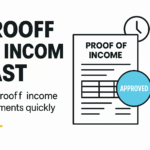

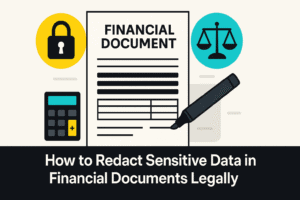
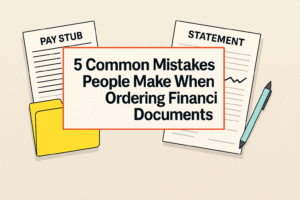
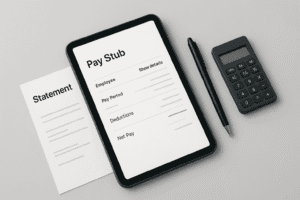
Add comment